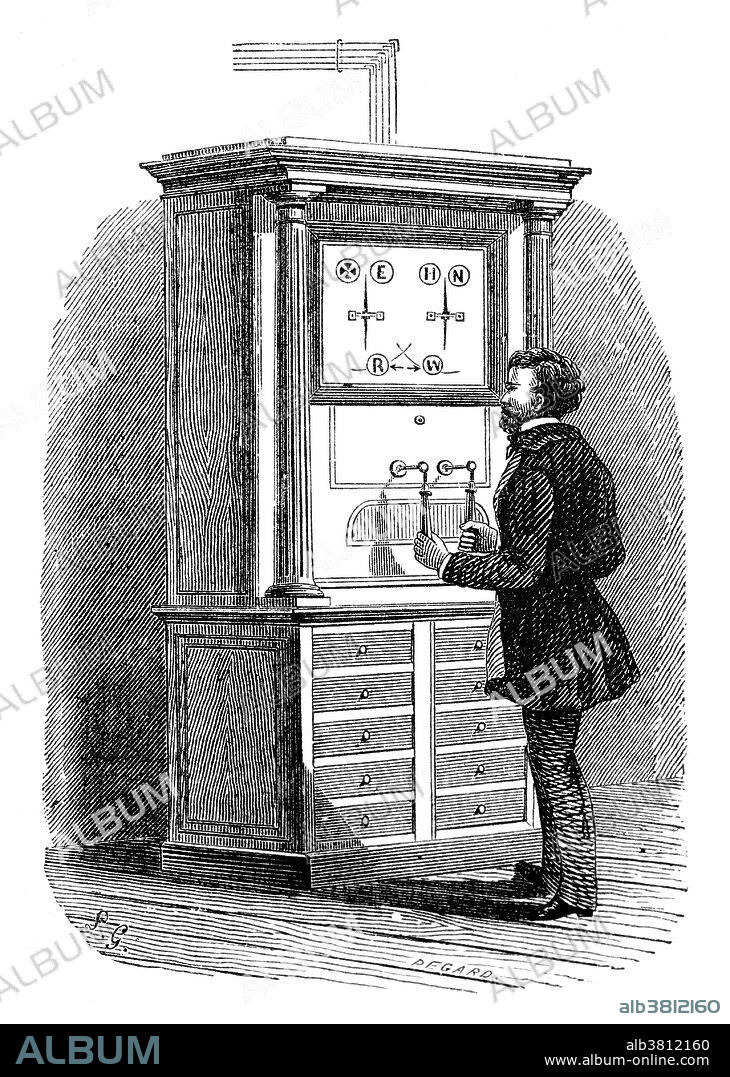alb3812160
Cooke and Wheatstone Two Needle Telegraph, 1830s

|
Zu einem anderen Lightbox hinzufügen |
|
Zu einem anderen Lightbox hinzufügen |



Haben Sie bereits ein Konto? Anmelden
Sie haben kein Konto? Registrieren
Dieses Bild kaufen

Titel:
Cooke and Wheatstone Two Needle Telegraph, 1830s
Untertitel:
Siehe automatische Übersetzung
The Cooke and Wheatstone telegraph was an early electrical telegraph system invented by English inventors William Fothergill Cooke and Charles Wheatstone. The receiver consisted of a number of needles which could be moved by electromagnetic coils to point to letters on a board. This feature was liked by early users who were unwilling to learn codes, and employers who did not want to invest in staff training. The two-needle telegraph required three wires, one for each needle and a common return. The coding was somewhat different from the five-needle telegraph and needed to be learned, rather than read from a display. The needles could move to the left or right either one, two, or three times in quick succession, or a single time in both directions in quick succession. Either needle, or both together, could be moved. This gave a total of 24 codes, one of which was taken up by the stop code. Three letters were omitted: J, Q and Z, which were substituted
Persönlichkeiten:
Bildnachweis:
Album / Science Source
Freigaben (Releases):
Model: Nein - Eigentum: Nein
Rechtefragen?
Rechtefragen?
Bildgröße:
3100 x 4350 px | 38.6 MB
Druckgröße:
26.2 x 36.8 cm | 10.3 x 14.5 in (300 dpi)
Schlüsselwörter:
BERÜHMT • BERÜHMTE PERSÖNLICHKEIT • ELEKTRIZITAET • ELEKTRIZITÄT • EUROPAEER (F M) • EUROPAEER • EUROPÄER (F M) • EUROPÄER • EUROPÄISCH • ILLUSTRATION • ILLUSTRATIONS • KOMMUNIKATION • MASS • NADEL • NOTABEL • PROMINENZ • STROM (ELEKTROTECHNIK) • TECHNOLOGIE • ZWEI
 Pinterest
Pinterest Twitter
Twitter Facebook
Facebook Link kopieren
Link kopieren Email
Email
